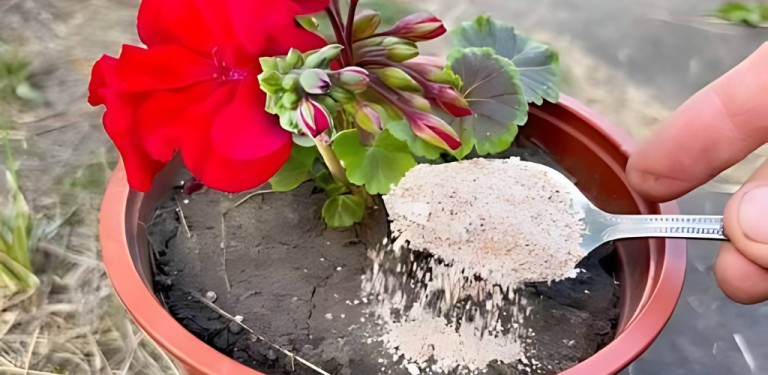ADVERTISEMENT
### **3. Which Plants Benefit from “Drying Just a Little”?**
While the “dry just a little” method can work for various plants, it’s especially beneficial for certain species. These plants have evolved to thrive in conditions where water stress is common, and they often respond well to mild dehydration. Here are some types of plants that can benefit from this technique:
#### **1. Succulents and Cacti**
Succulents and cacti are the prime candidates for the “dry a little” method. These plants are adapted to dry environments, and their natural bloom cycles are often triggered by periods of drought. Allowing them to dry out between waterings can help stimulate flowering. Succulent varieties like the **Aloe Vera** and **Echeveria** will especially appreciate this technique.
#### **2. Orchids**
Orchids are another type of plant that benefits from slightly reduced watering. These plants are highly sensitive to their environment, and too much water can cause them to fail to bloom. Orchids typically bloom in response to temperature fluctuations and mild drought stress, making them perfect candidates for this technique.
#### **3. Bougainvillea**
Bougainvillea is known for its vibrant and prolific blooms. These plants are native to dry, tropical regions, and they thrive when given periods of dryness followed by deep watering. A little dryness can encourage Bougainvillea to produce its colorful flowers in abundance.
#### **4. Lavender**
Lavender, a hardy and fragrant herb, responds well to periods of dryness. Lavender is drought-tolerant and can withstand brief periods of water stress, making it ideal for the “dry a little” method. With reduced watering, you can encourage this plant to produce its signature purple blooms.
#### **5. Geraniums**
Geraniums are another popular plant that benefits from mild dehydration. These plants, often found in hanging baskets or window boxes, bloom profusely when they receive proper sunlight and periodic dry spells. Giving them a little time without water can trigger blooming in just a week.
#### **6. Tomatoes and Other Flowering Vegetables**
Many fruiting plants, including tomatoes, peppers, and cucumbers, can benefit from mild stress. Reducing watering slightly between watering cycles can help encourage the plant to flower and set fruit. However, this method should be used with caution, as too much dehydration can stress the plant too much and stunt its growth.
#### **7. Hibiscus**
Hibiscus plants are another tropical variety that thrives with a bit of water stress. These plants bloom in vibrant colors when they are given a break from water for a short period. Hibiscus can bloom in as little as a week after experiencing reduced watering.
—
### **4. How to Implement the “Dry Just a Little” Technique**
If you want to encourage your plants to bloom faster using the “dry just a little” technique, here’s how to do it effectively:
1. **Identify Your Plant’s Watering Needs**: Before attempting this technique, ensure that you know the specific watering needs of your plant. Not all plants tolerate dehydration, and some may be harmed if you withhold water for too long.
2. **Reduce Watering Slightly**: Instead of watering your plant as usual, reduce the amount of water you provide by about 25-50%. This will mimic a period of mild drought without risking the health of the plant.
3. **Monitor the Soil**: Check the soil moisture before watering again. Allow the soil to dry out slightly before re-watering the plant. The goal is to avoid letting the plant dry out completely, as this could stress it too much.
4. **Gradual Re-Watering**: Once you notice signs of stress (such as slightly wilted leaves or dry topsoil), resume watering as usual. Water the plant thoroughly, ensuring that the roots receive ample moisture.
5. **Observe Blooming**: After about a week, you should start to see some blooming. For some plants, like geraniums or bougainvillea, you might even notice an explosion of flowers.
—
### **5. Additional Tips for Plant Care**
While the “dry just a little” method is effective for stimulating blooming, there are other important aspects of plant care that can help your plants thrive:
#### **1. Provide Adequate Sunlight**
Sunlight is essential for healthy plant growth. Ensure that your plants receive the appropriate amount of light based on their needs. For plants like succulents, cacti, and bougainvillea, bright, direct sunlight will encourage blooming.
#### **2. Maintain Proper Temperature**
Temperature plays a critical role in plant health. Most plants have an ideal temperature range for optimal blooming. Avoid exposing your plants to extreme temperature fluctuations or drafts, which can cause stress and inhibit blooming.
#### **3. Fertilize Regularly**
Fertilizing your plants with the right nutrients encourages healthy growth and vibrant blooms. Use a balanced fertilizer that provides essential nutrients, especially phosphorus, which is vital for flower production.
#### **4. Prune Dead Growth**
Pruning encourages new growth and helps plants focus their energy on producing flowers rather than sustaining dead or damaged growth. Regularly remove dead leaves, stems, and flowers to keep your plant healthy and blooming.
—
### **6. Conclusion**
The “dry just a little” technique is a surprising yet effective way to encourage your plants to bloom in just a week. By mimicking natural environmental stress, you can trigger a plant’s reproductive response, stimulating it to produce beautiful flowers. Whether you have succulents, orchids, geraniums, or bougainvillea, this simple method can make a big difference in your plant care routine. Remember, it’s important to understand the specific needs of your plants and apply this technique gently to avoid over-stressing them. With a little attention and care, you can create a blooming, thriving garden that will bring joy to your home all year round.
